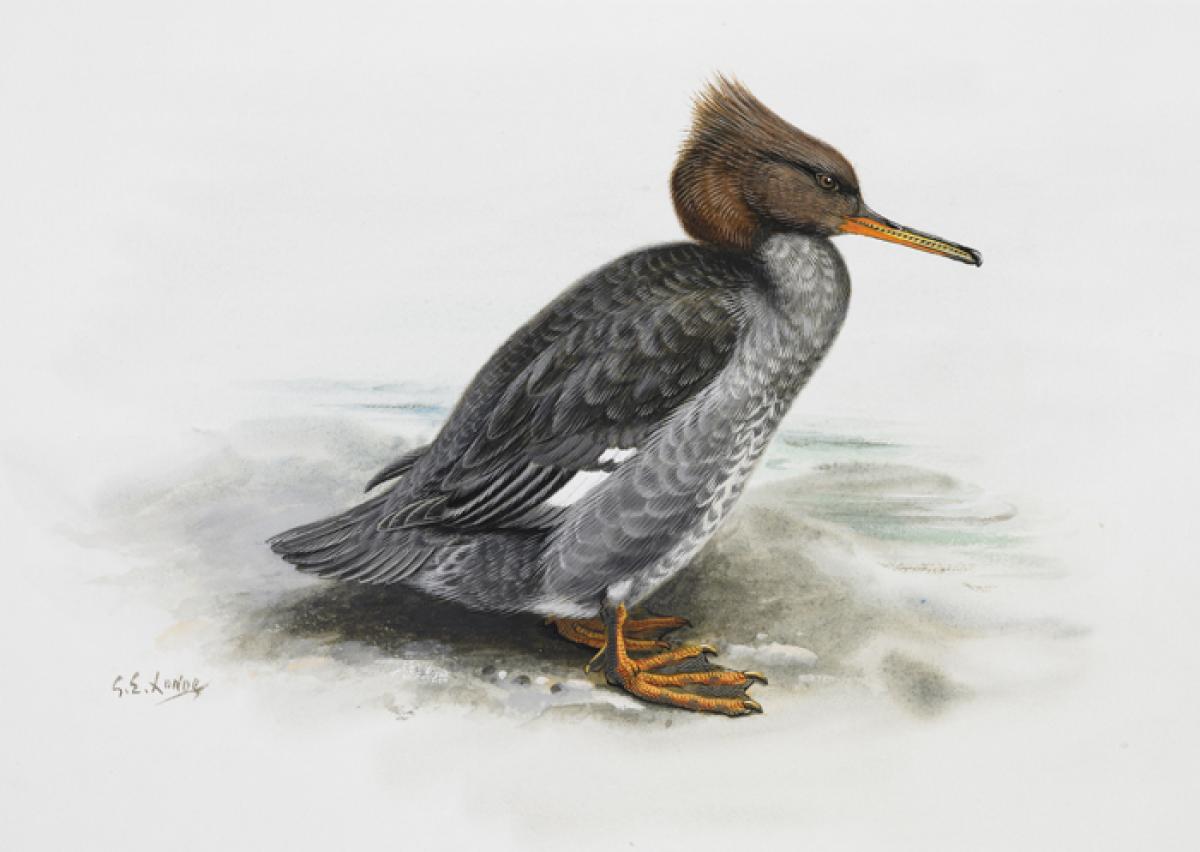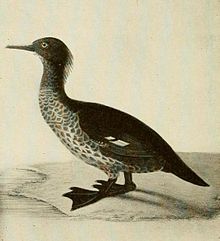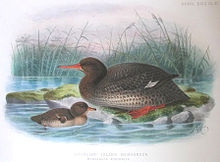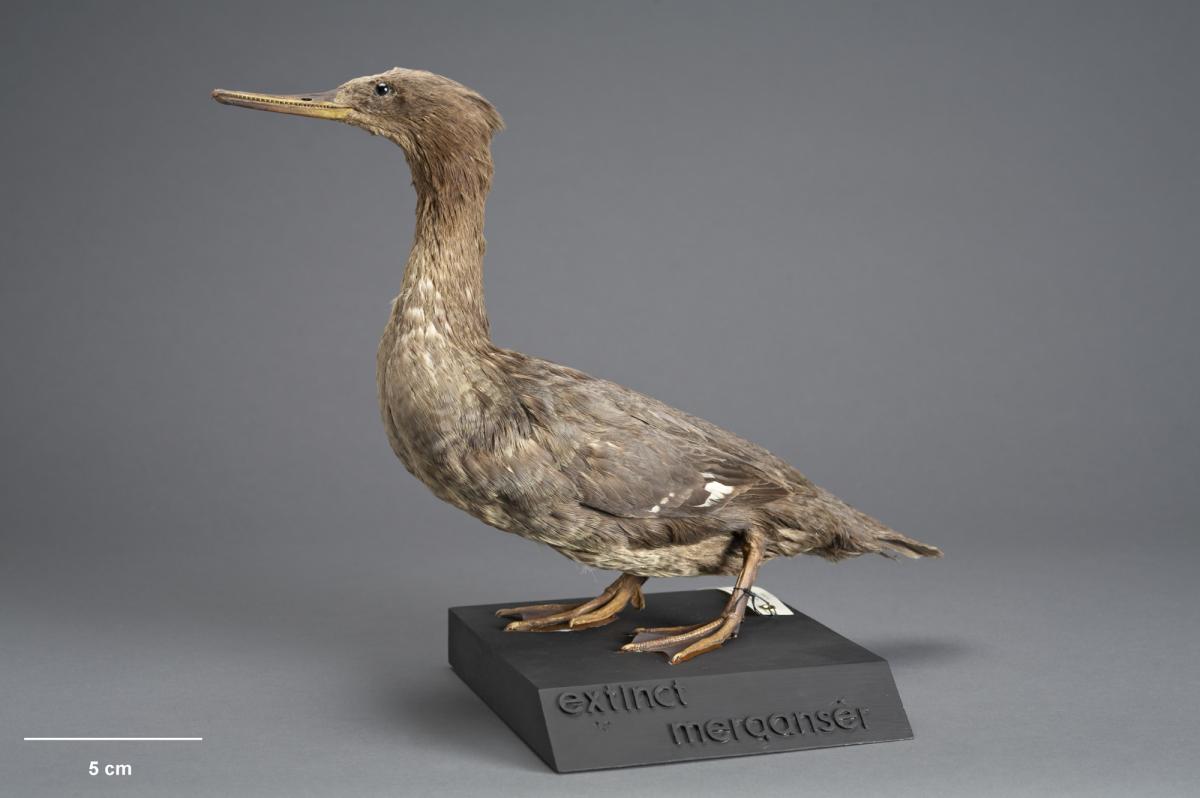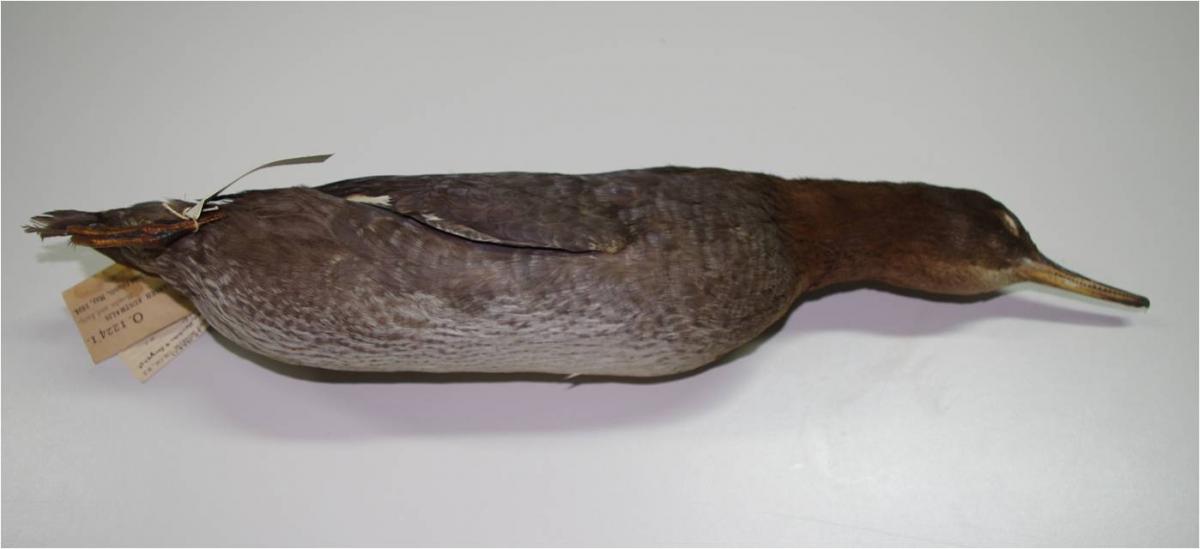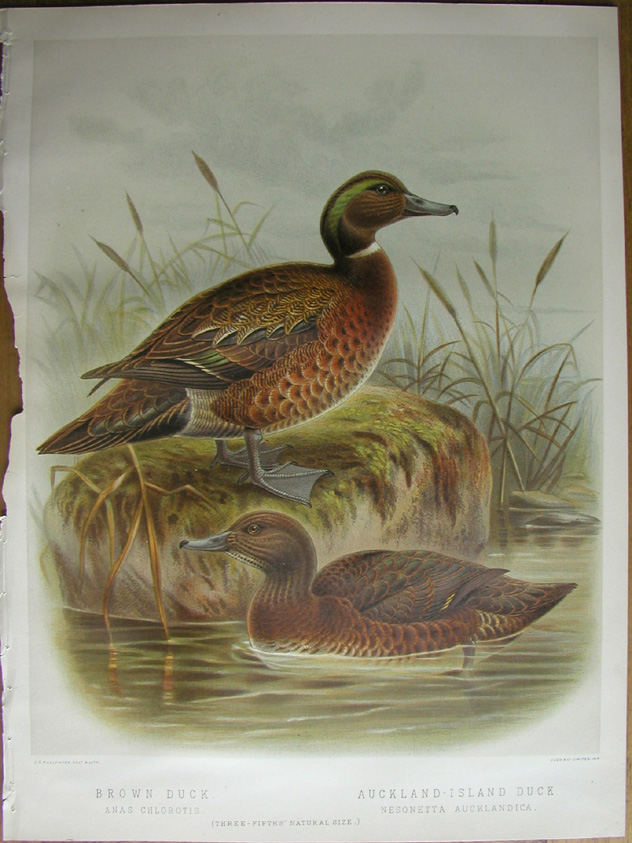Auckland Merganser
Aucklandsäger ( Mergus australis) Illustration John Gerrard Keulemans, from A History of the Birds of New Zealand, Vol II, 1888
The Aucklandsäger ( Mergus australis) is an extinct dabbling duck of the genus Merganser. The range of this Sägerart was limited to New Zealand. Already the Māori who colonized New Zealand from about 1000 AD, this type hunted so strong that he was cut off in the settlement of New Zealand by Europeans in the interior of New Zealand. The change of the habitat and the introduction of species such as pigs, sheep, goats, cats and dogs by the Europeans left the way then completely extinct in the early 20th century.
Description
The Aucklandsäger was a small Sägerart and the only representative of its genus, which occurred in New Zealand waters. The short wings suggest some scientists that the species was restricted airworthy.
The Aucklandsäger reached a size of 58 centimeters and a weight of 900 grams. He saw the female of a goosander quite similar, however, was smaller and darker. The head was reddish brown. Throat and fore neck were rust-colored. The back, shoulders and tail were blue black. The wings were ashen. The primaries were black. The middle secondaries were white on the outer webs. The Armschwingendecken showed white lace. The chest was dull gray with lighter crescent-shaped markings. The rest of the underside was mottled gray and white. The iris was dark brown. Legs and feet were reddish brown with a pink hint. The beak was longer than with other types of mergansers. The upper beak and the beak were black. The lower beak was yellow-orange. The male had a five to six inches long auburn Crest. In females, the Schopf was shorter.
In young birds, the Crest was again shorter and also appeared not to. The chicks were on the body top predominantly dark brown to black. At the end of the fuselage there were pale spots. Chin, throat, and the anterior chest was a chestnut -colored. In the face was maroon spots were under the eyes. Unlike other sawyers the chicks showed no white streaks on his face.
Dissemination
Fossil bone finds suggest that the Aucklandsäger in the past on mainland New Zealand, Stewart Iceland and the Auckland Islands has existed. Most fossil remains have been found near the coast. The fossil remains of at least two individuals, however, were excavated in Lake Poukawa. Also on the Chatham Islands, there are fossil bone finds of ducks who see those of Aucklandsägers very similar. In a mistakenly designated about 1842 when Robert McCormick as a sawyer breeds of ducks from the Campbell Island, which was wiped out in 1840 by rats, it could be either a population of Campbell duck (Anas nesiotis ) or an eyebrow duck ( Anas superciliosa ) action.
Way of life
Based on the contents of a dead bird beak was found that the Aucklandsäger of fish such as the lowland Hecht Ling ( Galaxias brevipinnes ) and aquatic invertebrates malnourished. Its beak was longer than that of other types of mergansers. He was an excellent diver, but due to its short wings is a very poor flyer. The Aucklandsägerpaar probably remained together throughout the year on. The breeding season was from November to December. The nest consisted of at least five eggs.
Extinction
On mainland New Zealand the Aucklandsäger probably died by human and rat adjustment from early as the 13th or 14th century. Excavations of māorischen middens have brought several bones Sägerart to this day, although otherwise fossil remains of this kind are rare. This is seen as evidence that Māori hunted this type targeted. In the 19th century the Aucklandsäger came in greater numbers before only on the Auckland Islands. A few copies survived in inaccessible areas on the north and east coast of New Zealand.
1806 pigs were introduced to the subarctic Auckland Islands, which decimated the stocks of highly Aucklandsäger. In 1840 they were collected during the expedition of the two Corvettes L' Astrolabe and La Zélee under the direction of Jules Dumont d' Urville for the first time in 1841 and scientifically described. After 1850, destroyed cattle, goats and sheep habitat, the saw. When dogs, cats and rats came to the islands, is not known. They accelerated the extinction of the Aucklandsägers. In addition, 25 specimens for museums were collected, of which the last pair was shot by Lord Ranfurly on January 9, 1902. It is now kept in the British Museum. 1909 there was an unsuccessful search. 1910, a reserve was built on the Auckland Islands. One last expedition in 1973 also failed, confirming fears that the species was extinct long.
In the museums of the world 26 bellows, 3 complete skeletons, some skeletal remains are stored and kept for three pickled in alcohol body. The National Museum of Ireland in Dublin also has a stuffed male.

